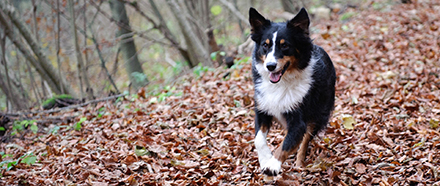Finland is the first country in the world to train dogs to sniff out the Heterobasidion fungus in spruce and rust fungus in pine. The Nose4Wood project, run jointly by the Lapland University of Applied Sciences and Natural Resources Institute Finland, strives to find out whether dogs can seek and identify Heterobasidion parviporum, Cronartium flaccidium and Peridermium pini in forests. Source: Forest Fi
To assist in the project, trainers specialized in scent detection were brought in from the Vainuvoima dog school.
The partner in charge of the project is Natural resources Institute Finland, which gathers the fungus samples from forests, has them identified in a laboratory and prepares thousands of scent samples for the dog training, which takes one year.
Dogs from all parts of Finland were selected for training, though Lapland is best represented.
“I hesitate to say that the result is absolutely certain, but we have a very strong feeling that the dogs will detect both pathogens,” says Sanna Vinblad from the Lapland University of Applied Sciences, who coordinates the training.
The training will take one year. Heterobasidion parviporum, together with Heterobasidion annosum, cause their hosts – spruce and pine, respectively – to rot, resulting in annual losses of EUR 50 million in Finland.
“We’re hoping that the dogs could detect the scent as early as possible,” says Vinblad.
An early detection would help combat the pathogens in a stand before the damage is widespread.
In forestry, dogs look for the spruce bark beetle at least in Sweden and the Czech Republic.
Sanna Vinblad stresses that when dogs detect these fungi, the finding is always preliminary. The presence of the pathogen must always be confirmed by humans.
Starting a forest management operation is the responsibility of the forest owner. The choice of what operations to undertake depends on whether the forest was planted or regenerated naturally, and whether it is young or already aged. The growing site and the tree species must also be taken into account.
After all this has been considered, it is time to go into detail, such as whether it will be enough to remove individual infected trees and saplings or will it be necessary to re-plant completely with another species, says Vinblad.
The dogs selected for the project represent many different breeds: Labrador Retriever, Lapponian Herder, Belgian Shepherd, Bohemian Shepherd, Dutch Shepherd, Pyrenean Sheepdog, Cocker Spaniel, Golden Retriever, Mudi, English Springer Spaniel and Australian Shepherd.
The dog handlers have varying backgrounds, from dog enthusiasts to forestry professionals.
Vinblad points out that scent detection is a natural behaviour for dogs.






